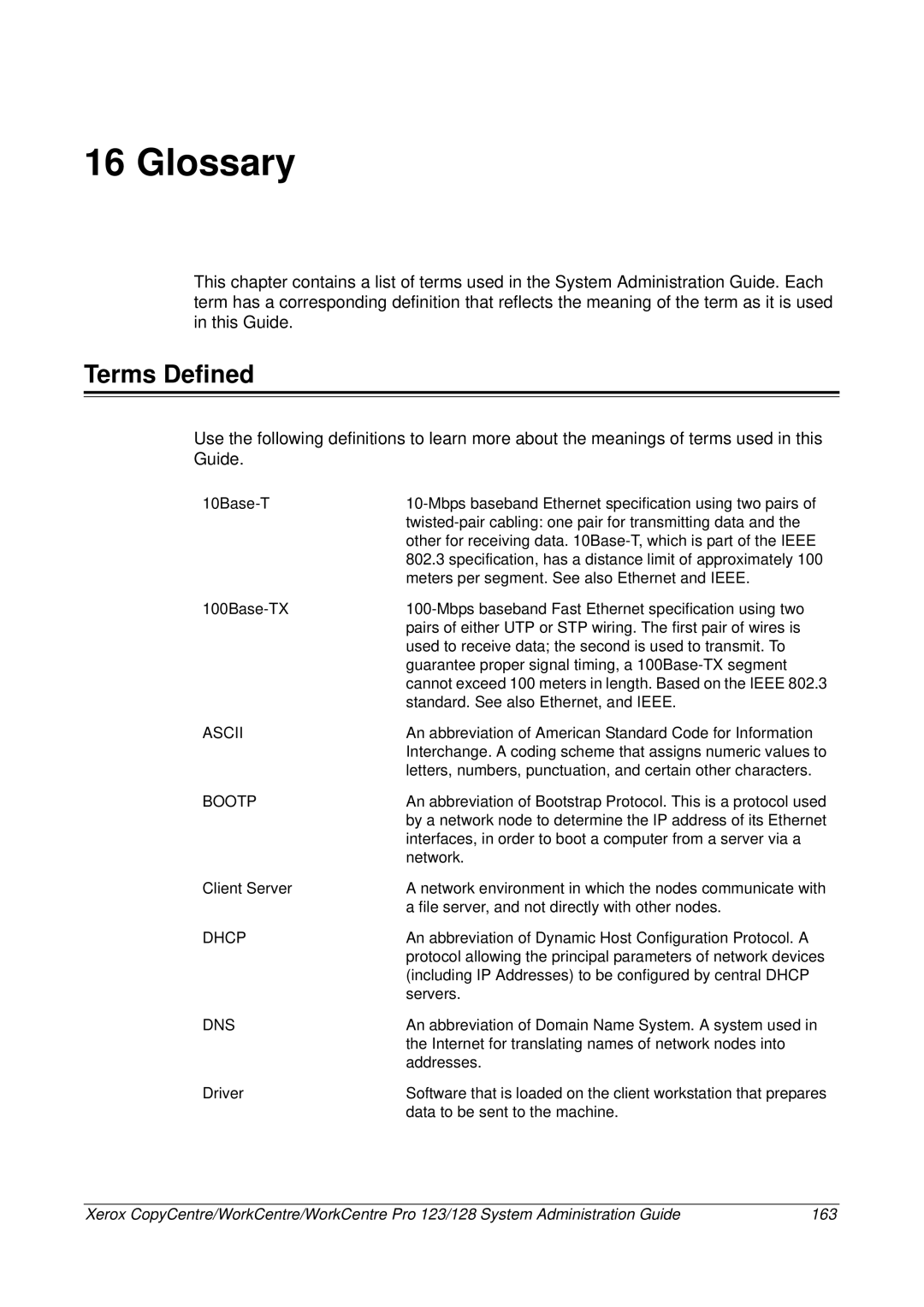16 Glossary
This chapter contains a list of terms used in the System Administration Guide. Each term has a corresponding definition that reflects the meaning of the term as it is used in this Guide.
Terms Defined
Use the following definitions to learn more about the meanings of terms used in this Guide.
| |
| other for receiving data. |
| 802.3 specification, has a distance limit of approximately 100 |
| meters per segment. See also Ethernet and IEEE. |
| pairs of either UTP or STP wiring. The first pair of wires is |
| used to receive data; the second is used to transmit. To |
| guarantee proper signal timing, a |
| cannot exceed 100 meters in length. Based on the IEEE 802.3 |
| standard. See also Ethernet, and IEEE. |
ASCII | An abbreviation of American Standard Code for Information |
| Interchange. A coding scheme that assigns numeric values to |
| letters, numbers, punctuation, and certain other characters. |
BOOTP | An abbreviation of Bootstrap Protocol. This is a protocol used |
| by a network node to determine the IP address of its Ethernet |
| interfaces, in order to boot a computer from a server via a |
| network. |
Client Server | A network environment in which the nodes communicate with |
| a file server, and not directly with other nodes. |
DHCP | An abbreviation of Dynamic Host Configuration Protocol. A |
| protocol allowing the principal parameters of network devices |
| (including IP Addresses) to be configured by central DHCP |
| servers. |
DNS | An abbreviation of Domain Name System. A system used in |
| the Internet for translating names of network nodes into |
| addresses. |
Driver | Software that is loaded on the client workstation that prepares |
| data to be sent to the machine. |
Xerox CopyCentre/WorkCentre/WorkCentre Pro 123/128 System Administration Guide | 163 |
